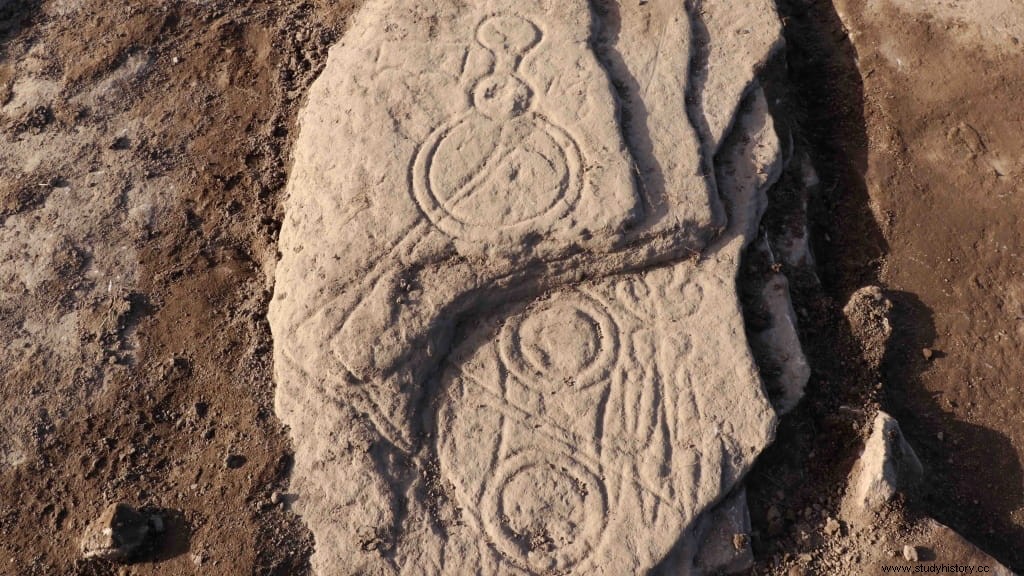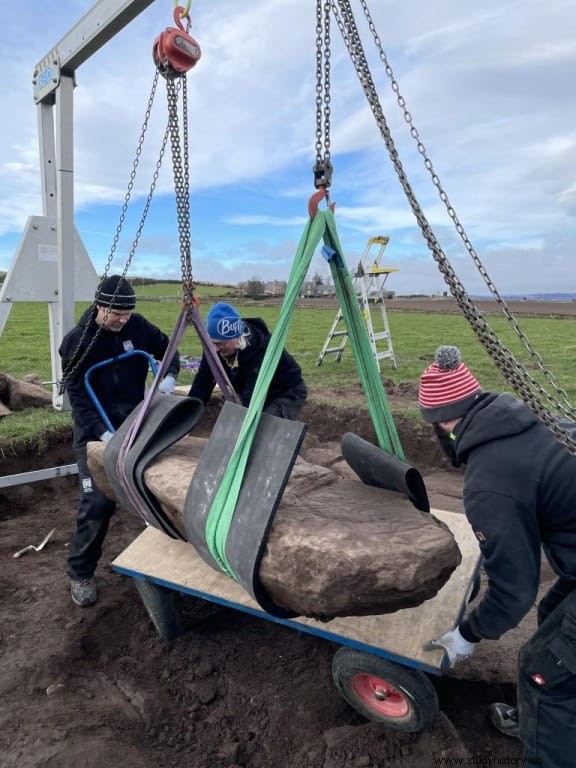Archaeologists have discovered a stone with a Pictish symbol near the location of one of the most important carved stone monuments ever discovered in Scotland.
The University of Aberdeen team stumbled upon the 1.7-metre-long stone in a farmer's field while conducting geophysical surveys to try to better understand the important Pictish landscape of Aberlemno, near Forfar.
Aberlemno is already known for its Pictish heritage thanks to its collection of unique Pictish standing stones, the most famous of which is a cross-shaped slab believed to depict battle scenes vital to the creation of what would be Scotland:The Battle of Nechtansmere.

Archaeologists were conducting geophysical surveys of the terrain in early 2020 in an effort to better understand the history of the extant stones as part of the Comparative Kingship project. , funded by the Leverhulme Trust.
They found anomalies that looked like evidence of a settlement and a small test pit was dug to try to determine if there were any remains of any buildings, but to their surprise the archaeologists came straight to a stone carved with a Pictish symbol, one of 200 that they know each other.
The team believes the stone dates to around the 5th or 6th century, and in recent weeks they have painstakingly excavated part of the settlement, removing it from its resting place, to find out more about the stone and its surroundings.

Professor Gordon Noble, who leads the project, says tripping over a stone while on an archaeological dig is highly unusual. Here at the University of Aberdeen we've been conducting research on the Picts for a decade, but none of us had ever found a stone with a symbol on it , He said. Only about 200 such monuments are known. Farmers sometimes dig them up when plowing fields or building roads, but by the time we get down to analyzing them, much of what surrounds them has already been disturbed . To find something like this when digging a small test pit is absolutely extraordinary and none of us could believe our luck .
The advantages of making a find this way are that we can do much more detailed work regarding the context. We can examine and date the layers below and extract much more detailed information without losing vital evidence .
Like the other Aberlemno stones, the new find appears to be intricately carved with evidence of classic Pictish abstract symbols, including triple ovals, a comb and mirror, a crescent and V-bar, and double disks. The stone seems to show different periods of carving with superimposed symbols.

The stone has been transferred to the Graciela Ainsworth Conservation Laboratory in Edinburgh, where further analysis will be carried out. Professor Noble hopes that he can make a significant contribution to understanding the importance of Aberlemno to the Picts. The stone was found embedded in the pavement of a huge building from the 11th or 12th century. The pavement included Pictish stones and examples of Bronze Age rock art. The 11th-12th century building appears to be built directly on settlement layers dating back to the Pictish period he added.
The cross-shaped slab found in nearby Aberlemno Church has long been thought to represent King Bridei Mac Bili's defeat of Anglo-Saxon King Ecgfrith in 685, which halted the expansion of the Anglo-Saxon kingdoms to the north . The settlement of Dunnichen, from which the battle is believed to have taken its name, is a few kilometers from Aberlemno. In recent years, scholars have suggested another possible battle site at Strathspey, but the large number of Pictish stones from Aberlemno certainly suggests that the area around Aberlemno was an enormously important landscape for the Picts.
The discovery of this new stone with Pictish symbols and the evidence that this site was occupied for such a long period will provide new insights into this important period in Scottish history, as well as help us better understand how and why this part of Angus became a key Pictish landscape and later an integral part of the kingdoms of Alba and Scotland .
The project has enlisted the help of the Aberdeenshire Council Archeology Service and the Pictish Arts Society to lift the stone and take it to the conservation lab, with radiocarbon dating funded by Historic Environment Scotland .
The researchers will now work with the Pictish Arts Society to develop a fundraising campaign for the conservation and exhibition of the stone.
